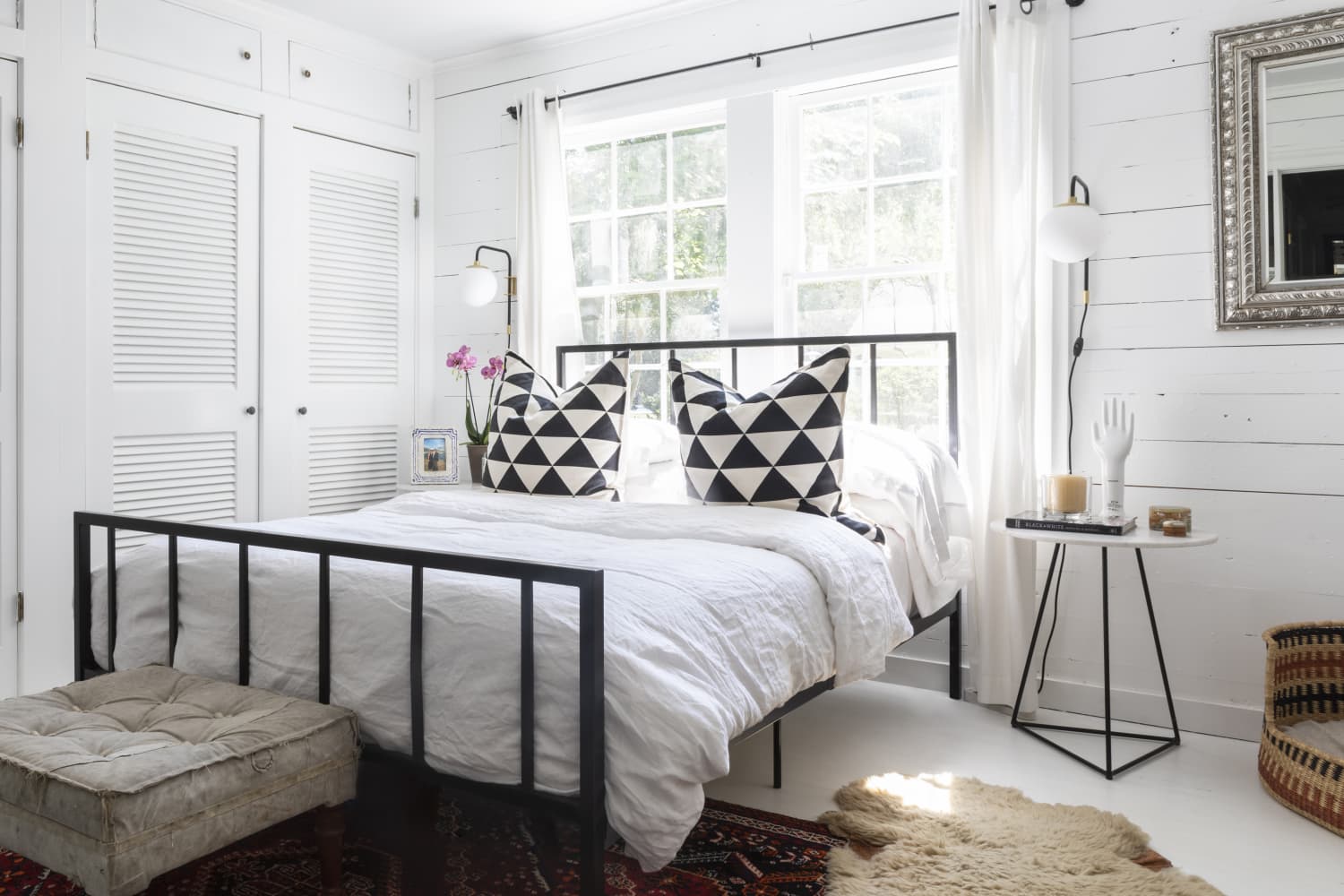As the final days of summer wane and Labor Day weekend approaches, millions of homeowners and renters alike find themselves drawn to the promise of seasonal sales that can transform their living spaces without breaking the bank. This year, the home and kitchen sectors are bustling with an array of discounts and deals that not only invite practical upgrades but also inspire creative reinvention of our everyday environments. Retail giants like Home Depot are leading the charge with substantial markdowns on tools, appliances, and garden essentials, while brands such as Nolah, known for their innovative mattresses, are offering noteworthy savings that appeal to those prioritizing comfort after a day of laborious projects.
The appeal of Labor Day sales, especially in the home and kitchen categories, goes beyond mere price cuts. It taps into a long-standing tradition of marking the unofficial end of summer with a collective desire to refresh and prepare for the colder months ahead. This cultural undercurrent is reflected in the way families plan their purchases—perhaps a new grill for late-summer barbecues or a state-of-the-art blender to kick-start healthier fall routines. Home Depot, with its extensive inventory ranging from power tools to smart home gadgets, has become a cornerstone for many DIY enthusiasts and professional contractors alike. Their seasonal promotions often include not just discounts but bundled offers that make ambitious projects more feasible. For instance, discounts on paint and painting supplies can encourage a weekend makeover of tired walls, a notion supported by interior design experts who highlight the psychological benefits of a refreshed living space as the seasons change.

This cyclical surge in home improvement activity is well documented in consumer behavior studies, such as those published in the Journal of Consumer Research, which note that holidays often serve as temporal landmarks motivating people to initiate change. The Labor Day weekend, in particular, is a fertile ground for such transformations because it offers a rare convergence of time off, favorable weather, and promotional incentives. Meanwhile, brands like Nolah are capitalizing on this momentum by positioning their sales as opportunities to invest in wellness through better sleep. Their mattresses, designed with proprietary foam technology to balance support and pressure relief, often see a spike in sales during this period, as families seek to upgrade their bedrooms for the upcoming colder months and increased indoor living.
The convergence of home improvement and wellness is a fascinating trend that reflects broader societal shifts. As work-from-home arrangements persist and the boundaries between professional and personal spaces blur, consumers are increasingly investing in creating environments that support both productivity and relaxation. This is echoed in the rise of smart kitchen appliances and ergonomic furniture that have become staples of contemporary living. Retailers responding to this demand are not only slashing prices but also enhancing the shopping experience through online tutorials, installation guides, and customer support—elements that help demystify home projects for novices and seasoned renovators alike.

For those interested in diving deeper into the nuances of home improvement and design, our story offers a thoughtful exploration of how spaces shape our daily lives and well-being. Additionally, in-depth resources provide comprehensive guides on selecting the right tools, materials, and brands to ensure that purchases made during these sales translate into long-term satisfaction rather than fleeting bargains. It’s worth noting that while the allure of discounts is strong, the true value lies in aligning purchases with one’s lifestyle needs and aesthetic preferences.
Gardening enthusiasts also find Labor Day an opportune moment to stock up on supplies for fall planting and garden maintenance. The seasonal shift calls for preparing soil, pruning, and investing in hardy plants that will thrive through winter. Home Depot’s garden center often features marked-down equipment like leaf blowers and compost bins, which can ease the transition and encourage sustainable practices. This intersection of environmental mindfulness and consumerism is a compelling narrative in contemporary home living, highlighting how even holiday sales can contribute to greener habits.
Of course, the excitement around Labor Day sales is not without its controversies. Critics argue that the heavy promotions can lead to overconsumption and impulse buying, which may result in waste or buyer’s remorse. This perspective is supported by behavioral economists who caution against the psychological effects of scarcity and urgency tactics commonly employed by retailers. Yet, when approached thoughtfully, these sales can empower consumers to make meaningful improvements that enhance their quality of life.
As the weekend unfolds, the blend of tradition, economic opportunity, and personal aspiration comes to the fore. Whether it’s upgrading a kitchen appliance, refreshing a bedroom mattress, or tackling a DIY project inspired by newfound confidence, the Labor Day home and kitchen sales offer more than just bargains—they provide a canvas for reimagining the spaces where we live, work, and gather.
Reflecting on this annual ritual, one sees how shopping during Labor Day sales is emblematic of a deeper human impulse: the desire to nurture our habitats as extensions of ourselves. It’s a reminder that homes are living entities, evolving with our needs, dreams, and the passage of time. The discounts and deals, while enticing, are but tools in this ongoing journey of making a house truly a home.
For more historical context on Labor Day and its cultural significance, see the Labor Day Wikipedia article. To understand the psychological impact of home environments, the American Psychological Association offers insightful research. And for a comprehensive look at consumer behavior during sales events, the Journal of Consumer Research provides authoritative studies that illuminate these patterns.
The rhythm of Labor Day sales, especially in the realm of home and kitchen goods, also underscores a broader economic narrative—one where consumers wield their purchasing power as a form of agency amid shifting market landscapes. Retailers like Home Depot and Nolah have learned to anticipate this surge, tailoring their promotions to not only clear inventory but also spark inspiration for projects that might have been lingering on wish lists for months. This interplay between supply and demand is a dance as old as commerce itself, yet each year it feels freshly charged, buoyed by cultural shifts and technological advances that reshape how we shop and what we seek.
Take, for instance, the rise of smart home devices and energy-efficient appliances, which have become staples in many Labor Day sales. These items represent more than just modern conveniences; they symbolize a collective move toward sustainability and intelligent living. Consumers are increasingly aware of how their choices at the checkout can ripple outwards—affecting energy consumption, environmental impact, and even the aesthetic coherence of their living spaces. This trend dovetails neatly with the ethos of Labor Day, a holiday rooted in honoring the dignity of work and, by extension, the environments that support our labor and leisure.

Moreover, the fluidity between online and in-store shopping experiences during these sales adds another layer of complexity and convenience. Consumers might start their journey browsing Home Depot’s website, enticed by flash deals on power tools, then pivot to checking out Nolah’s mattress discounts, all without leaving the comfort of their homes. Yet, for many, the tactile experience of visiting a store remains irreplaceable—feeling the heft of a drill, testing the firmness of a mattress, or simply soaking in the ambiance of a well-curated showroom. This hybrid approach reflects a modern consumer psyche that values both efficiency and sensory engagement.
Looking ahead, it will be fascinating to observe how emerging technologies like augmented reality might further transform these shopping rituals. Imagine virtually placing a new kitchen island into your home, or visualizing how a sleek, new refrigerator might complement your existing decor before committing to a purchase. These innovations could deepen the emotional connection consumers have with their homes, making the act of shopping during sales events not just transactional but truly experiential.
In the end, the annual dance of Labor Day home and kitchen sales is more than just a commercial event; it is a moment where personal narratives, economic forces, and cultural values converge. It invites us to reflect on what home means in our lives and how we can actively shape those spaces to better serve our evolving needs. As the deals come and go, the true value lies in the possibilities they unlock—inviting us to imagine, create, and ultimately, live more fully within the walls we call home.
Yet, this interplay between commerce and personal space is not without its complexities. The very notion of home has been shifting rapidly, especially in the wake of global events that have kept many of us indoors far more than anticipated. As a result, the stakes of these sales have risen: a discounted blender or a new set of sheets isn’t just a convenience—it’s a potential lifeline to comfort, productivity, and even mental well-being. Retailers are increasingly aware of this, tailoring their promotions not just around price but around lifestyle narratives that resonate on a deeper level. Home Depot’s recent campaigns, for example, have emphasized not just DIY projects but the joy of crafting a sanctuary, subtly acknowledging the emotional labor tied to home improvement.
This emotional layer is where brands like Nolah have carved out a distinctive space. Their emphasis on sleep health, combined with aggressive Labor Day discounts, taps into a growing cultural recognition that rest is foundational to wellness. In conversations with customers and sleep experts alike, it’s clear that mattress shopping during these sales is often about more than just the mattress—it’s about reclaiming nights lost to stress, discomfort, or restless routines. The surge in online mattress companies during these periods underscores a broader shift toward direct-to-consumer models that prioritize transparency and convenience, challenging traditional retail paradigms.

Meanwhile, the kitchen—a space historically steeped in tradition—continues to evolve as a hub of innovation and social connection. Labor Day sales have become a gateway for introducing smart appliances that promise to simplify meal prep or reduce energy consumption. Yet, these gadgets often spark debate: do they enhance our culinary experiences, or do they risk alienating us from the tactile, sensory joys of cooking? Observing shoppers at stores like Home Depot reveals a spectrum of attitudes, where some embrace technology eagerly, while others seek out timeless tools and materials that speak to heritage and craftsmanship.
Looking forward, the convergence of these trends suggests that future Labor Day sales may be less about mass-marketed bargains and more about personalized, meaningful upgrades that align with individual stories and values. As urban living spaces shrink and remote work blurs the lines between office and home, the demand for adaptable, multifunctional, and sustainable products will likely intensify. Retailers who can anticipate and respond to these nuanced desires may redefine the seasonal sales landscape, transforming it from a mere date on the calendar into a catalyst for thoughtful home evolution.
In this light, the humble Labor Day sale emerges as a cultural event imbued with layers of significance—economic, emotional, and even philosophical. It challenges us to reconsider our relationship with the spaces we inhabit and the objects we surround ourselves with, urging a mindfulness that transcends the transactional. As we navigate the deals and delights of these sales, we participate in a broader narrative about home, identity, and the pursuit of a life well-lived.
Yet, amid this evolving landscape, the enduring appeal of certain classic home and kitchen staples remains unmistakable. Consider the perennial draw of a well-crafted cast-iron skillet or a robust set of stainless steel cookware—items that carry with them not only functionality but stories of generations past, whispered through the patina of use and care. These pieces often resurface at Labor Day sales, reminding consumers that while innovation propels us forward, there is a deep-rooted comfort in the familiar. Home Depot, for instance, consistently features discounts on these enduring favorites, bridging the gap between nostalgia and necessity. Shoppers browsing these aisles may find themselves momentarily transported to memories of family dinners or the warm glow of a kitchen hearth, even as they weigh the merits of the latest smart appliances.
This tension between the old and the new is particularly evident when one steps into the realm of bedding and mattresses, where brands like Nolah have made significant inroads. Their Labor Day discounts often spotlight not just price reductions but innovations in sleep technology—foam compositions engineered for pressure relief, cooling materials designed to combat night sweats, and eco-conscious manufacturing processes. Yet, as much as these advancements appeal to the modern consumer’s desire for comfort and wellness, they also invite reflection on how our homes have become sanctuaries in the truest sense. In an era marked by uncertainty and rapid change, investing in quality rest becomes an act of self-care and resilience. The sales, therefore, serve not merely as economic opportunities but as invitations to prioritize well-being amid the chaos.
The ripple effects of these sales extend beyond individual households, touching on broader societal shifts. The push for sustainability, for example, is no longer a niche concern but a mainstream expectation, influencing how retailers curate their Labor Day promotions. Home Depot’s increasing emphasis on energy-efficient appliances and recycled materials reflects a growing corporate acknowledgment of environmental responsibility. Meanwhile, consumers are becoming more discerning, seeking out products that not only enhance their living spaces but do so without compromising the planet’s future. This dynamic fosters a marketplace where ethics and aesthetics intersect, challenging the traditional notion of a sale as merely a chance to save money.
Moreover, the very timing of Labor Day as a moment to refresh our homes carries symbolic weight. It marks the unofficial end of summer, a transition into a season of introspection and preparation. The act of purchasing new kitchen gadgets or bedding during this period can be seen as a ritualistic gesture—a way to usher in change and set intentions for the months ahead. It’s a reminder that our living spaces are not static backdrops but evolving environments that reflect our growth, aspirations, and values. In this way, the Labor Day sales become a microcosm of the human experience, blending commerce with culture, utility with emotion.
Looking ahead, one might speculate on how these sales will continue to adapt in a world shaped by digital transformation and shifting consumer priorities. Will virtual reality showrooms and AI-driven personalization redefine how we shop for our homes? Could emerging materials and designs further blur the lines between technology and tradition? While the answers remain uncertain, what is clear is that the essence of these sales will persist—a moment to pause, to reconsider, and to invest in the spaces that cradle our daily lives. As we navigate the bargains and the choices, we participate in a dialogue that transcends transactions, affirming the profound ways in which our homes shape and are shaped by us.
Yet, amid this evolving landscape, the tactile experience remains irreplaceable. Walking through the aisles of a Home Depot, for instance, the smell of freshly cut lumber mingles with the hum of power tools, grounding shoppers in a sensory reality that no online platform can fully replicate. It is in these physical spaces that inspiration often strikes—a glimpse of a sleek faucet or the vibrant hue of a new paint sample can spark a cascade of ideas for a weekend project. This sensory engagement, coupled with the tangible thrill of spotting a markdown sticker, fuels the excitement that surrounds Labor Day sales. Meanwhile, brands like Nolah, known for their innovative mattresses, bring a different dimension to the equation by blending comfort with conscious design, appealing to consumers who seek both luxury and sustainability. Their online presence underscores the growing importance of digital convenience without sacrificing the intimacy of a good night’s sleep.
The tension between tradition and innovation is palpable in these sales, mirroring broader societal shifts. Consider the debates around smart kitchen appliances: some herald them as breakthroughs that simplify cooking and reduce waste, while others lament the loss of tactile control and the potential for increased electronic waste. This dialogue reflects a deeper cultural negotiation about the role of technology in our most intimate spaces. Labor Day sales, then, become more than mere commercial events; they are arenas where consumer values and technological trends intersect and sometimes clash. The choices shoppers make during these sales can signal broader shifts in household priorities—from energy efficiency and minimalism to aesthetic boldness and multifunctionality.
Looking to the future, one can imagine a scenario where augmented reality apps allow consumers to visualize new kitchen layouts or furniture arrangements in real time, bridging the gap between imagination and reality. Such tools could democratize interior design, making it accessible to those who might otherwise feel overwhelmed by the prospect of home improvement. Yet, as these digital innovations gain traction, the question remains: will they enhance the human connection to our living spaces, or risk reducing our homes to mere data points and algorithms? The answer likely lies somewhere in the middle, as technology continues to serve as both a tool and a challenge to our notions of comfort and identity.
In the end, the enduring appeal of Labor Day home and kitchen sales lies in their capacity to blend the practical with the poetic. They invite us not only to save money but to dream about the possibilities of our homes—how a new countertop might brighten morning routines, or how a cozy throw can transform a room’s ambiance. As these sales unfold, they weave together stories of craftsmanship, innovation, and personal renewal, reminding us that the heart of any home is not just in its walls or appliances, but in the lives and stories it shelters.


